Thought Scuplture 2017
THOUGHT SCULPTURE. Lecture-performance series
January – April 2017.
Location: Trafoclub
Free entrance
curator: Borbála Szalai
You can download the flyer of the series form here.
For the video-dokumentations of the lecture-performances please visit our YouTube channel.
13/01/2017 6 pm - 8 pm
Serafín Álvarez, Karin Ferrari, György Szimán
György Szimán will talk in Hungarian, Karin Ferrari and Serafín Álvarez will talk in English during their lecture-performance.
Serafín Álvarez: Dead Ends Unfolded
Maze Walkthrough is an unorthodox video game created by Serafín Álvarez in 2014, an interactive virtual architecture made by assembling 3D reproductions of science fiction corridors, sound effects and music together, which give shape to a manifold, complex space to be wandered through. In this new work, a lecture-performance specifically conceived for Trafó Gallery, Álvarez will play Maze Walkthrough live while revealing some of its core elements, external references, inner depths and expanded fields.
Serafín Álvarez (1985) is living in Barcelona, his work focuses on popular media depictions of subjective experiences mediated by technological and scientific developments, especially changes in the perception of reality. His most recent projects develop heterogeneous approaches to various aspects of science fiction, especially how concepts associated with otherness and the journey into the unknown are represented in contemporary audiovisual media such as cinema and video games, through work methodologies that reproduce certain creative practices commonly used by fan audiences of the genre. Álvarez holds a BA and a MA from the University of Barcelona, where he is currently doing a research project on transmedia expansions of science fiction as part of his PhD. He has shown his works at art institutions such as CA2M (Móstoles), CAC (Vilnius), Junefirst Gallery (Berlin), MACBA (Barcelona), MUSAC (León) and La Panera (Lleida) amongst others.
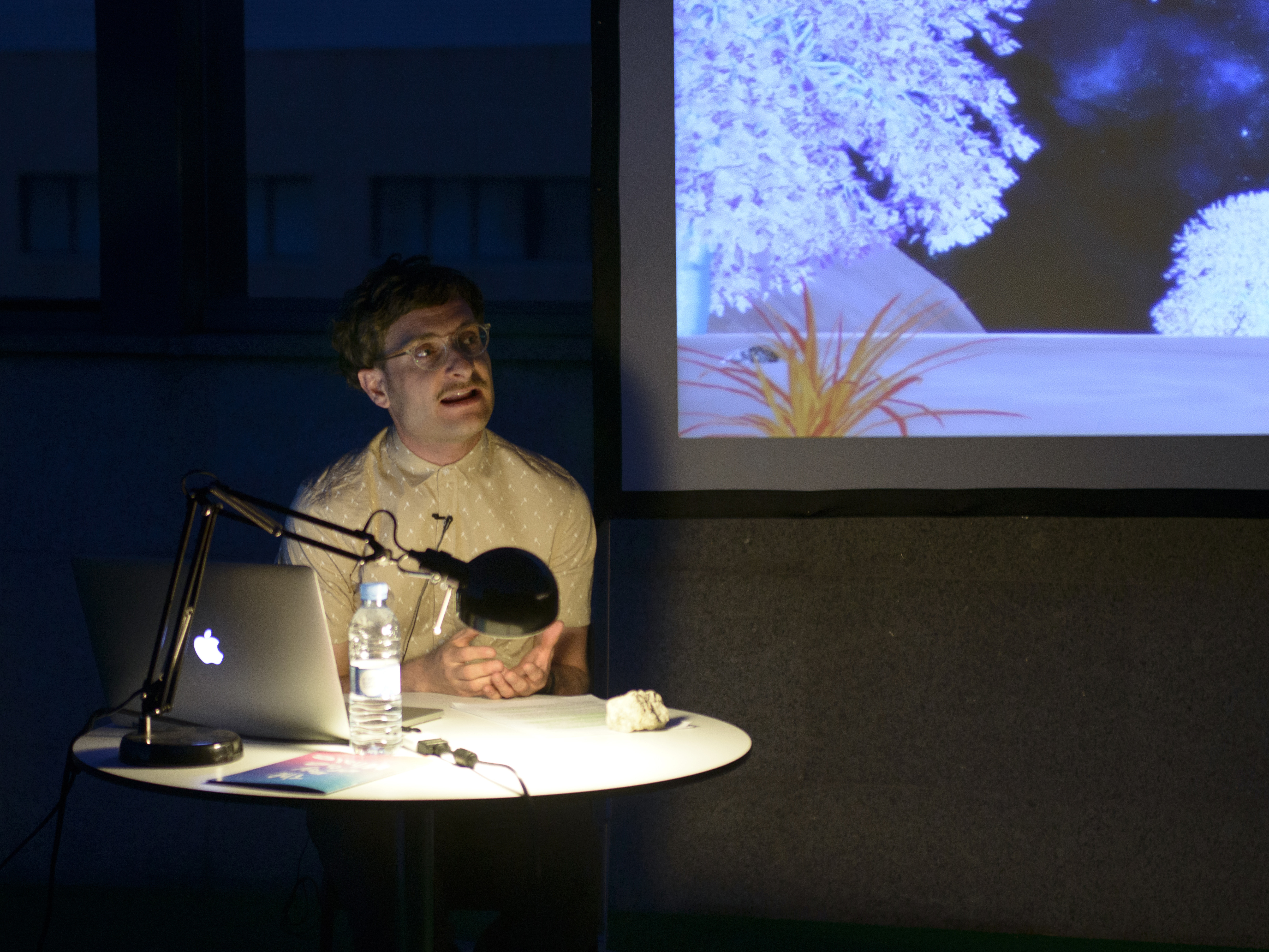
Serafín Álvarez: The Belly of the Whale, 2016 (photo: Arantxa Boyero, CA2M)
Karin Ferrari: Predictive programming: Is the Media Leaking the Future?
Recently a Simpsons episode from the year 2000 made headlines because it predicted Donald Trump’s election as US President. Is this a simple coincidence or a case of predictive programming? Predictive programming is a controversial hypothesis about mind control in media: storylines or subtle images in movies and television shows are used to subconsciously familiarise the public with planned major events and substantial social changes. As a matter of fact, preemptive mass manipulation is already hidden in our everyday digital life in the form of algorithmic personalized search results (filter bubbles). Is predictive programming real? Is classified information leaked through sci-fi movies and music videos? Or do we manifest the images implanted into our collective consciousness?
Karin Ferrari (1982) is a Vienna based artist, who explores symbolism in pop culture, the
entertainment industry and social media in her work. Ferrari’s web series ‘DECODING (THE
WHOLE TRUTH)’ reveals hidden messages in music videos and TV clips. She studied painting and cultural studies at the Academy of Fine Arts in Vienna. She has exhibited and lectured in Austria and internationally, amongst others at the V. Moscow International Biennale for Young Art, at Amsterdam Drawing, at the Royal Military Museums in Brussels, at Ars Electronica Festival, Linz, in Vienna at the 21er Haus - Museum for Contemporary Art, Kunsthalle and at the Akademie der bildenden Künste.
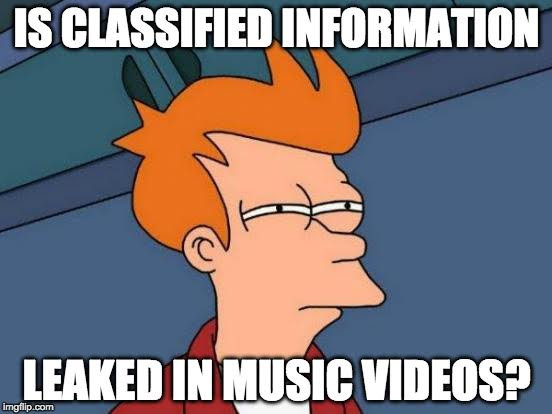
György Szimán: Superplay
The videos and streams about gamers playing and commenting video games (‘Let’s play videos’) are watched by millions. These videos done by gamers mostly for documenting their achievements (eg.: speedruns, kill counts) are almost as old as FPS games themselves. In parallel with the progress of the medium and of technology those video games have also appeared, which implement narrative or dramatic techniques known from movies. Based on these games new kinds of videos have also spread, which rather concentrate on the story, on entertainment or on the pleasure of playing, and which created new formats and presentations with a greater and different kind of audience. György Szimán in his lecture-performance - while playing live with several game classics - will talk about the potential of the medium, it’s possible depths, and the choices, challenges and moral dilemmas of a gamer.
György Szimán (1983) studied at the Intermedia Department of the Hungarian University of Fine Arts. Since 2016 he is a member of the Studio of Young Artists’ Association. Amongst his intermediary conceptual works, he’s current main interest is the medium of videogames.
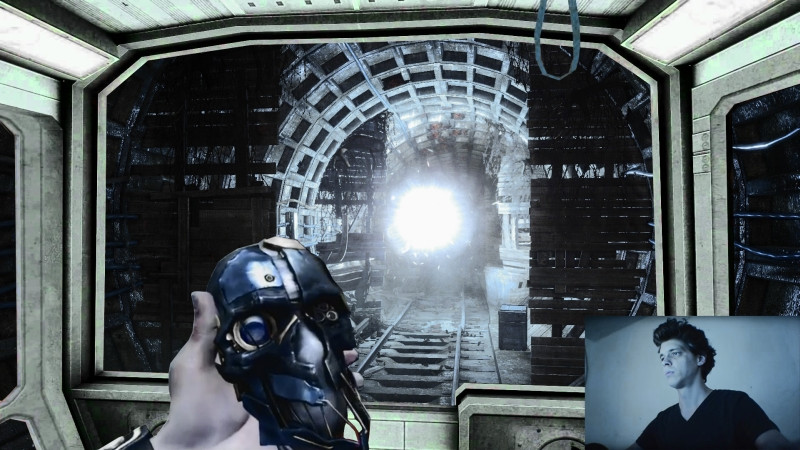
17/02/2017. 6 pm – 8 pm
Pedro Barateiro, Little Warsaw
The lecture-performances will be in English
Pedro Barateiro: The Sad Savages
In his lecture-performance Barateiro creates a parallel between two events happening at the same place; the cutting of palm trees caused by a plague and the financial crisis, especially its effect on Southern EU countries like Portugal, Spain and Greece. The lecture implements references from various fields; form economy and philosophy, through Tumblr and Facebook, until Barateiro’s own artistic work and his book covers for a fictional publishing house. In his lecture he examines the relation between the idea of melancholia and psycho-sociologic alienation, between intention and imitation as social acts, between the effects of colonial thinking and the forces of capitalism, or the relation of the words in the title ‘sad’ and ‘savage’.
Pedro Barateiro’s (1979) background in drawing, painting and writing was expanded by his education with an MA at Malmö Art Academy, Lund University, Sweden; and at the Independent Study Program in Visual Arts at Maumaus – School of Visual Arts, Lisbon. He further developed his practice in residencies at Air Antwerpen (Antwerp), Pavillon – Palais de Tokyo (Paris), ISCP (New York), Sítio das Artes, CAM – Fundação Calouste Gulbenkian (Lisbon), Spike Island (Bristol) and Galeria Zé dos Bois (Lisbon). He had solo exhibitions at REDCAT, Los Angeles; Museu Colecção Berardo, Lisbon; Kettle’s Yard, Cambridge; Parkour, Lisbon; Kunsthalle, Lisbon; Kunsthalle Basel; Museu de Arte Contemporânea de Serralves, Porto. His work has been included in exhibitions such as the 29th Bienal de São Paulo; 16th Syndey Bienalle; 5th Berlin Bienalle; Fondazione Guiliani, Rome; ngbk, Berlin; MHKA, Antwerp; SESC Pompeia, São Paulo; CAM – Fundação Calouste Gulbenkian, Lisbon; ar/ge Kunst, Bolzano; Palais de Tokyo, Paris.
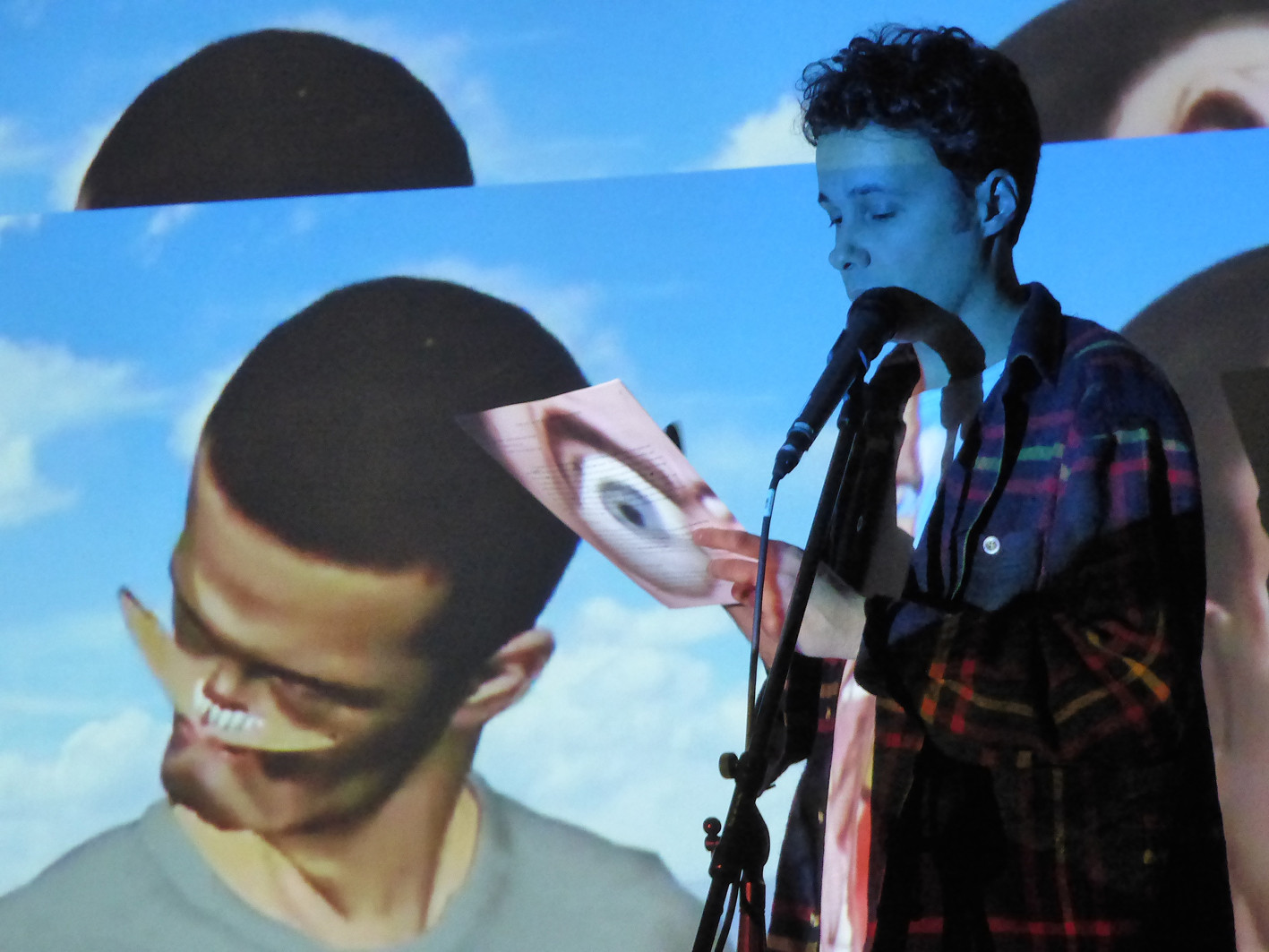
Pedro Barateiro: The Sad Savages, 2014 (photo: courtesy of the artits)
Little Warsaw: Presentation
“An artist pointing at an other artist”.
András Gálik (1970) and Bálint Havas (1971) began their collaboration in the late 1990. Through films, installations and a wide variety of media, the Hungarian artist duo Little Warsaw addresses historical memory and confronts personal encounters with social experience. At the same time, they examine the role of the artist not only as a producer of images, objects or situations but also as an agent of the context he/she is embedded in. Thus, through their manifold investigations, the artwork itself is also presented as a subject of political, sociological and ideological changes. In recent years, the personal perspective came more and more into the foreground in their latest works, where their very own micro histories, family legends intermingle with greater political events and social changes. In this manner, the radical gestures of interventions of their previous works are often complemented with a more poetic way of expression. The Little Warsaw’s work has been widely exhibited internationally since 2003. They had solo exhibitions e.g. at Museum Abteiberg, Mönchengladbach; AKZM Austellungshalle zeitgenössische Kunst, Münster; Galerie für zeitgenössische Kunst, Leipzig; Kunstnernes Hus, Oslo and Secession, Vienna. Their projects have been included in the 2nd Berlin Biennial, the 1st and 3rd Prague Biennial, in Manifesta 7 in Roverto, in the 12th Bienal de Cuenca, as well as in numerous group exhibitions throughout the world; e.g. at Stedelijk Museum, Amsterdam; Singapore History Museum, Apexart New York, Mathaf Doha, Qatar; Modern Art Institute, Valencia and Institut du Monde Arabe, Paris.
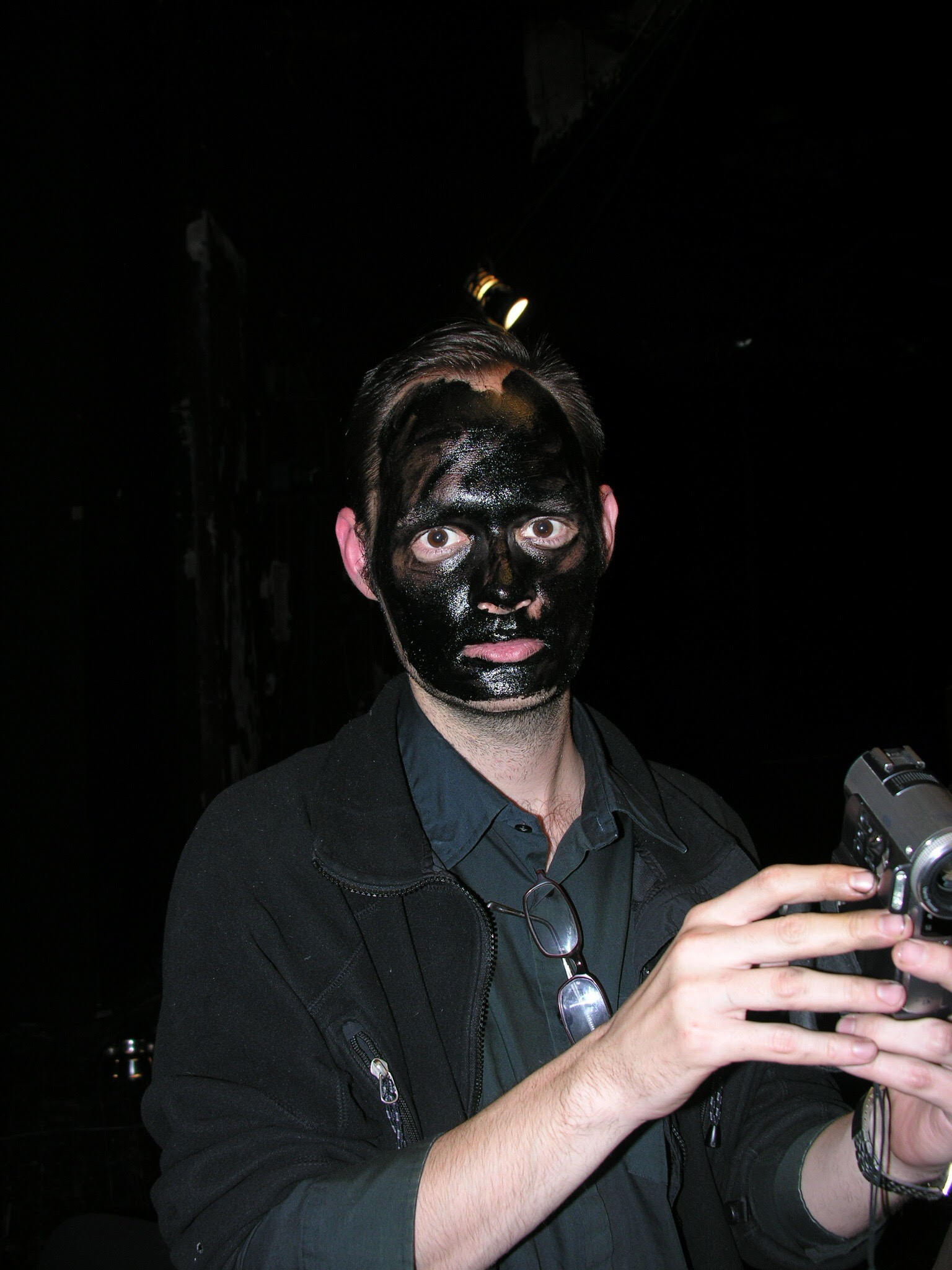
Little Warsaw and Miklós Erhardt: Ship of Fools, 2008. Production still (photo: Peter Puklus©Little Warsaw Archive)
16/03/2017. 6 pm – 8 pm
Miklós Erhardt, The Bureau of Melodramatic Research
The lecture-performances will be in English
Miklós Erhardt :Instrumental
The performance-lecture is a reiteration of a liebling theme in the artist's work, involving melancholy, Bob Dylan and post-truth.
Miklós Erhardt (1966), media-artist, doing videos, ephemeral installations and context based works. Between 1998 and 2006 he worked in the Big Hope artist group on participatory projects. His work was included in exhibitions in Apex Art New York, Galerija Skc Belgrade, Galerie für Zeitgenössische Kunst Leipzig, Wiener Secession and Manifesta 7. He is an associate professor of the Moholy-Nagy University of Art and Design Budapest, he lives and works in Vienna and Budapest.
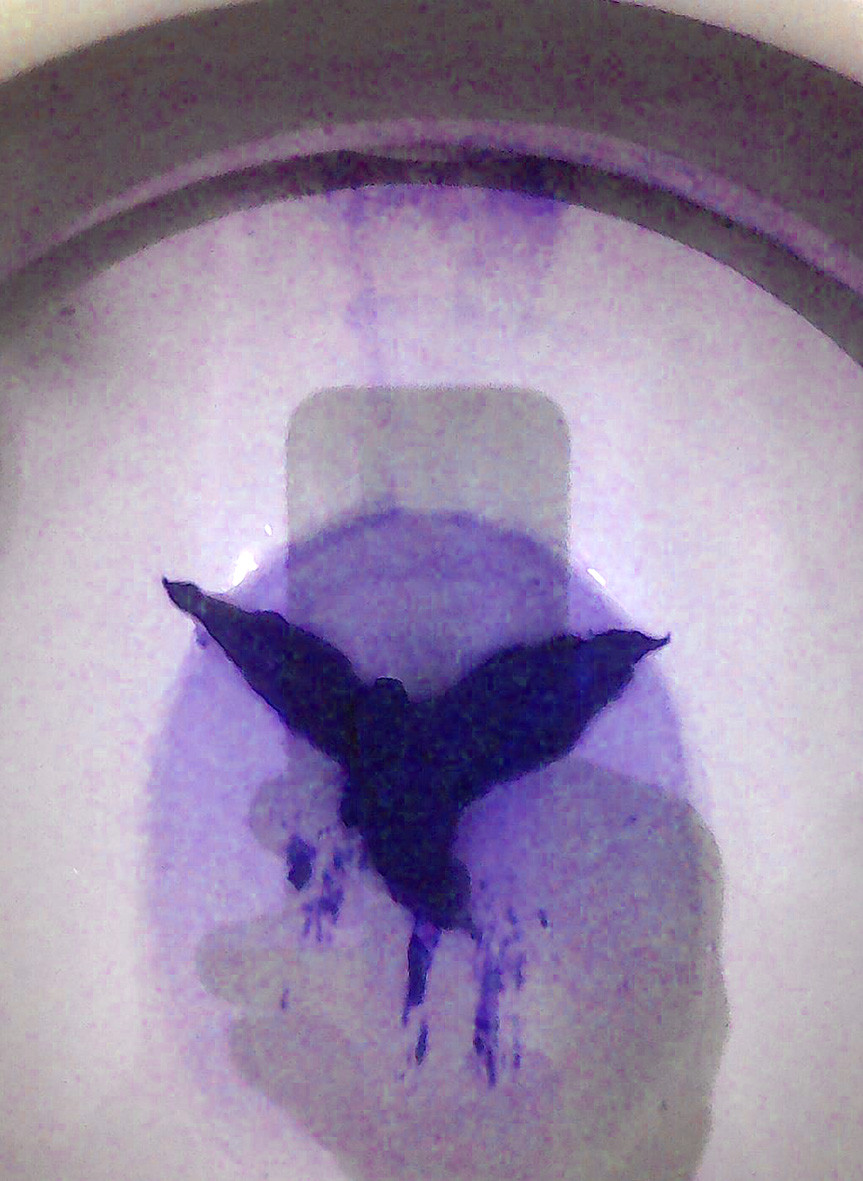
Miklós Erhardt : Instrumental Dove, 2016
The Bureau of Melodramatic Research: Lessons on Anything
Using the table as a stage to set up controversies on contemporary philosophical ideas and argue about the latest pop songs, the Bureau of Melodramatic Research will make a dialogue-performance where the phone is a speaker, smalltalk a script, and sometimes not. Where your side of the table is a representation and my side the real world and vice versa, the napkin a world and the teaspoon a thought. Like Flaubert’s characters Bouvard and Pécuchet, the Bureau is an expert in anything, from melodrama to philosophy - and in the end they are just complex copies, redundant to one another. The same half, repeated.
Audience is free to join, eavesdrop, check their feeds, drop out of the bar. On this stage, they can choose to be free as in a museum, engaged as in the theater.
“I ain't gonna do your laundry, I ain't your mama”.
The Bureau of Melodramatic Research is a dependent institution founded by Irina Gheorghe and Alina Popa to investigate the affective modulations of contemporary politics and the emotional performance of labour in the new economy. The Bureau’s explorations gradually extended to the intricate workings of alien, anonymous passions which connect us to an unhuman world at the core of ourselves. Their work was shown in Times Museum Guangzhou, WING Hong Kong, CCK Buenos Aires,MNAC Bucharest, bak Utrecht, mumok Vienna, Salonul de proiecte Bucharest, DEPO Istanbul, Ujazdowsky Castle Warsaw, messagesalon Zurich, Center for Visual Introspection Bucharest, etc.
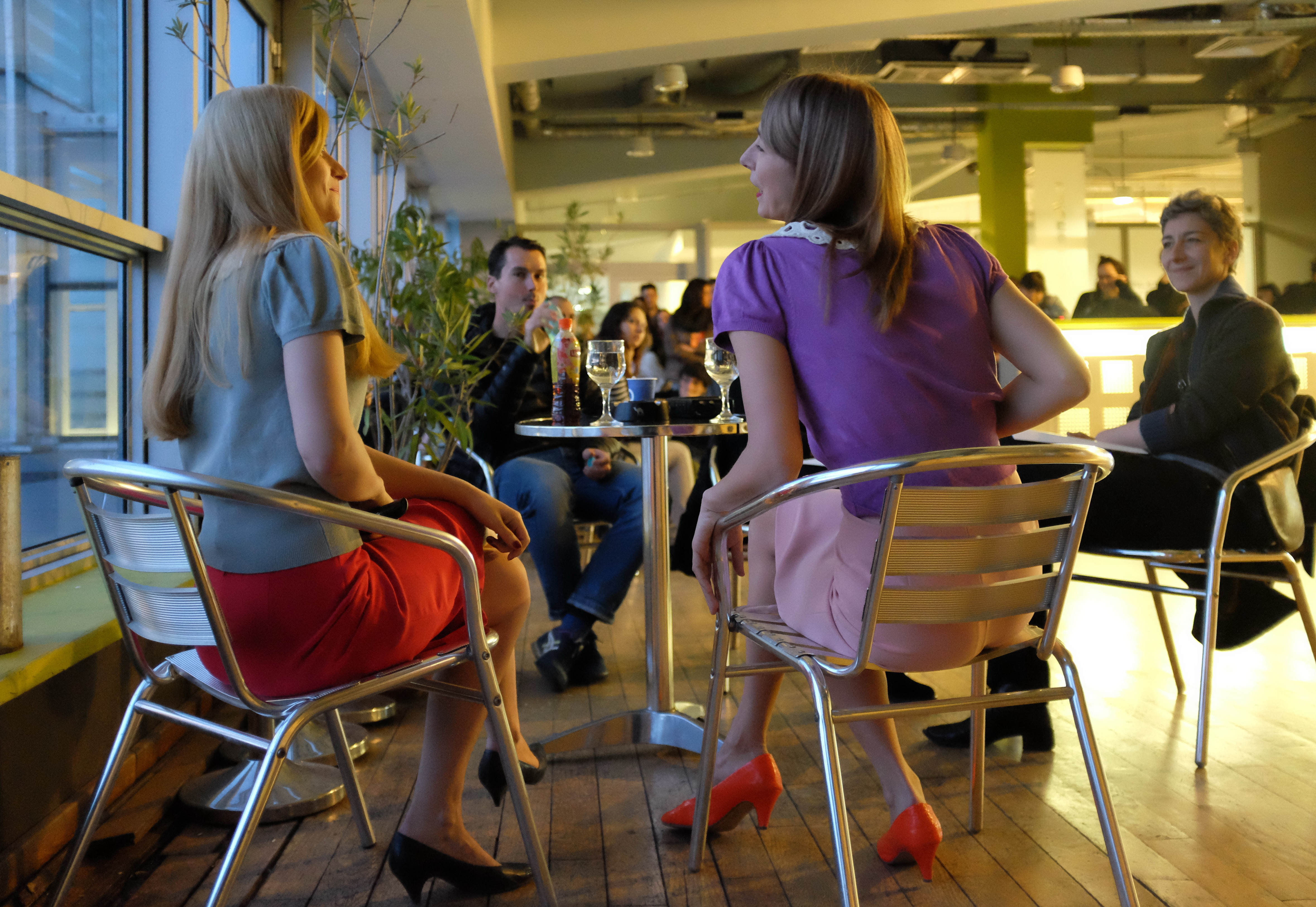
17/03/2017. 6 pm – 8 pm
Pakui Hardware, Ralo Mayer
The lecture-performances will be in English
Pakui Hardware: For Subjects with Perfect Knees
Pakui Hardware will take a walk around the loop of the paradox in which our biological bodies are entangled today: on the one hand, the body is under a constant pressure to enhance oneself, on the other – it is doomed to be left behind as an obsolete vehicle in relation to possible technological developments. Can we make a third hand here? The trajectory of this walk will include algorithmic ecology of High-Frequency Trading, ideas of Prometheanism, the promises of synthetic biology and the perils of perfect knees.
Pakui Hardware (Neringa Cerniauskaite and Ugnius Gelguda) began in 2014. The duo's work spans around the relationship between materiality, technology and economy. How technology is shaping current economy and the physical reality itself, including the human body. In relation to the velocity of technological development, the matter becomes both an obstacle and a vehicle. Their latest solo shows include venues of MUMOK, Vienna; ExoExo, Paris; kim? Contemporary Art Center, Riga; Jenifer Nails, Frankfurt; Contemporary Art Centre (CAC), Vilnius; 321 Gallery, Brooklyn, New York; NADA New York. The artists have participated in group shows at Moscow Biennale for Young Art, Moscow Modern Art Museum (MMOMA) and Zacheta Project Room, Warsaw. The artists are IASPIS grant holders in Sweden.
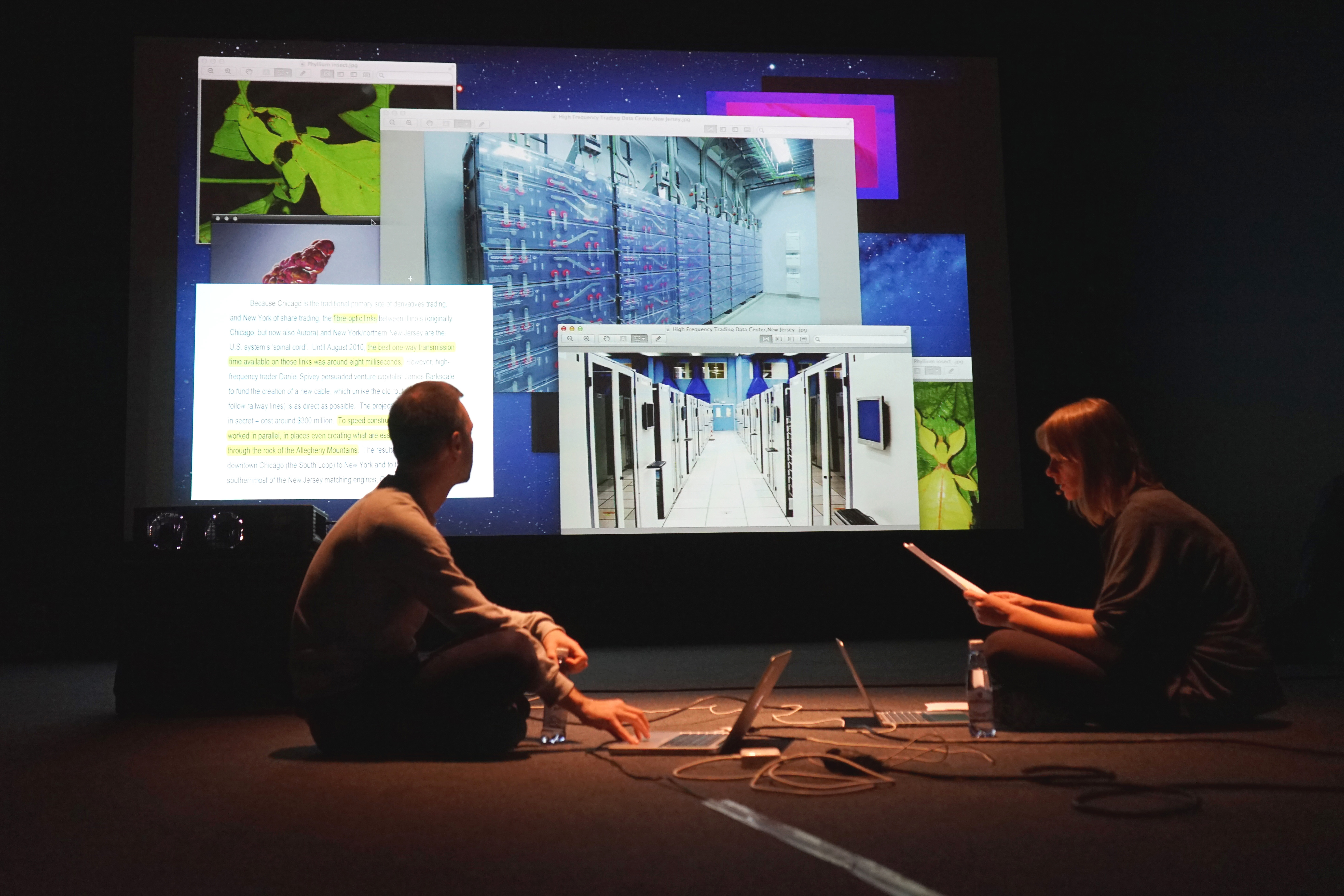
Pakui Hardware: On the Ecology of Algorithms, 2014
Ralo Mayer: E.T.E. – Extra-Terrestrial Ecologies
On September 26, 1991, eight crewmembers began a two years mission inside the closed ecosystem Biosphere 2 near Oracle, Arizona. Their goals: exploring global ecological relationships and testing future life in space.
Unreliable synopsis of related events: E.T., in drag as post-Soviet consultant and blaring Nirvana’s just-released Nevermind, arrives in the Sonoran Desert to help out the Biospherians with a staged reading of Kim Stanley Robinson’s Mars trilogy. Liberal Martian organic-potato farmer Matt Damon talks to Trump’s chief strategist about his Biosphere 2 takeover. (Steve Jobs like ¯\_(ツ)_/¯, Joan Baez ♫). William Burroughs and Bucky Fuller hack redwood and Allen Ginsberg’s “Howl,” and psychedelic microdosing becomes Silicon Valley’s hot new business trip. In girum imus nocte et consumimur igni, aka De revolutionibus orbium coelestium—now solar-powered!
Ralo Mayer (1976) is an artist based in Vienna. His artistic investigations delineate ecologies of contemporary history linking the past, future and today’s science fiction. Based on a practice of extensive performative research, he creates multilayered storytelling settings in installations, videos, performances and texts. He has presented his work at international exhibitions, film festivals, and conferences, amongst others in Secession, Vienna, 21er Haus, Vienna; Kunsthalle, Vienna; University Museum and Art Gallery, Hong Kong; rotor, Graz; Kunstpavillon, Innsbruck; Lentos Kunstmuseum, Linz; NGBK, Berlin; Transmission Gallery, Glasgow; Artspeak, Vancouver; SKC, Belgrad Kunsthaus Baselland, Basel; ARGOS, Brussels.
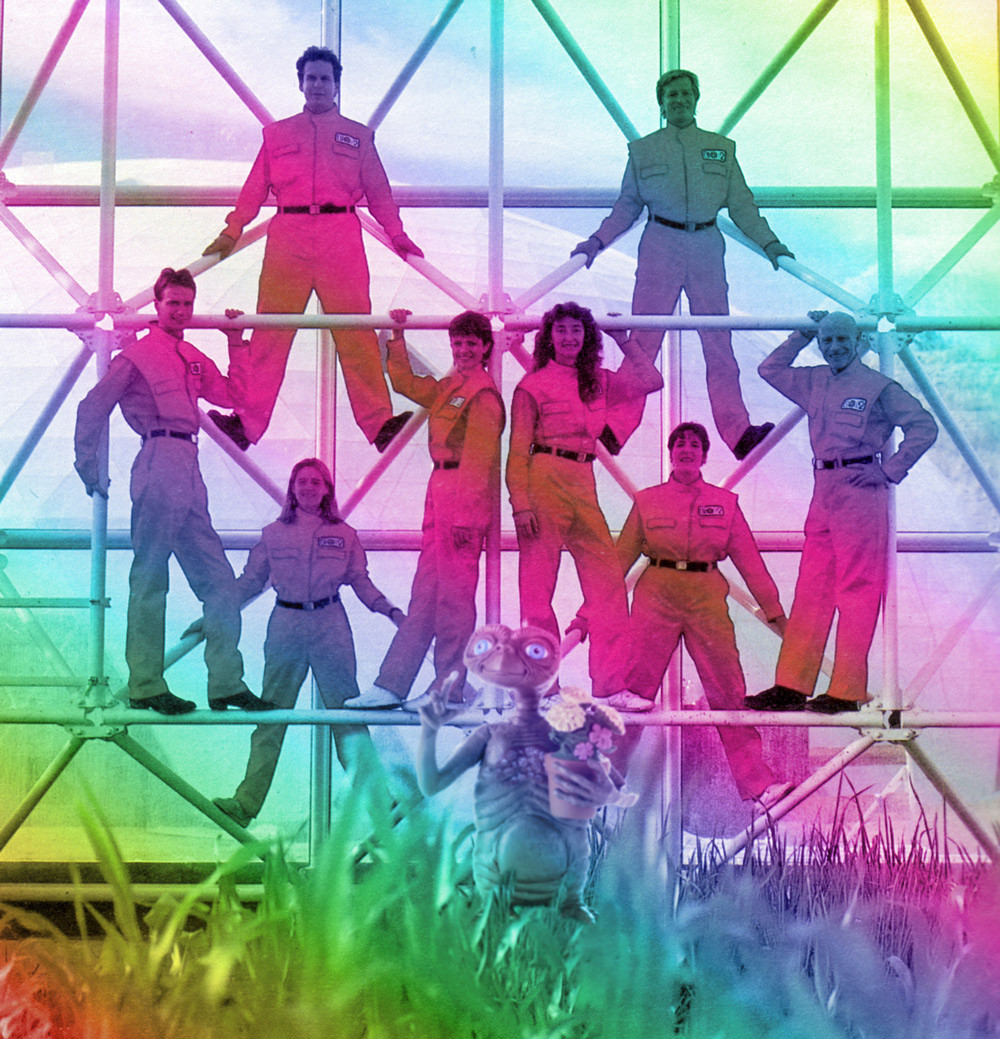
Ralo Mayer: Extra-Terrestrial Ecologists, 2016. Digital collage
21/04/2017. 6 pm – 8.30 pm
Rana Hamadeh, Andi Schmied
The lecture-performances will be in English
Rana Hamadeh: And Before It Falls It Is Only Reasonable To Enjoy Life A Little
This performance, developed under the umbrella of the Alien Encounters Project that Rana Hamadeh initiated in 2011, is an exhaustive deliberation on the notion and gesture of ‘falling’: falling as a form of legal apathy; falling as a choreographic gesture; and falling as a dynamic of virulence. In this performance, the artist leads a journey amidst the legal coding of the terms ‘falling ill’, ’immunity’ and ‘quarantine’, to outer-space and land-sea relations plotted through science fiction projections, geo-political territory formation and cross-border travel. Thinking through the conjunction of the legal and the spatial, Hamadeh plays out an intensive scrutiny of the shared lexicons of criminology, epidemiology and theater.
Rana Hamadeh (1983) is a visual and performance artist from Lebanon based in The Netherlands. Drawing on a curatorial approach within her artistic practice, she develops longstanding discursive projects that think through the infrastructures of justice, militarism, histories of sanitation and theatre. Her work stems from an extended investigation into specific concepts and terms, treating the field of theory as fiction. Hamadeh's previous solo exhibitions include a.o. The Institute of Modern Art, Brisbane; The Showroom, London; Leopold Hosch Museum; Nottingham Contemporary; Western Front, Vancouver; Gallery TPW, Tonoto and Kiosk, Ghent. Group exhibitions include a.o. The Moscow Biennial, The New Museum, New York; e-flux, New York, The 8th Liverpool Biennial, Wattis Institute, The Lisson Gallery, Beirut, Witte de With and the Van Abbemuseum.
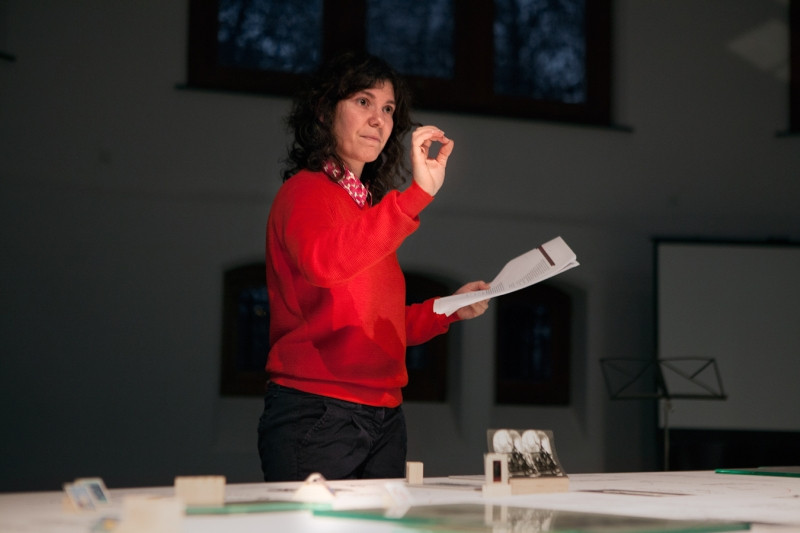
Rana Hamadeh: And Before it Falls It Is Only Reasonable to Enjoy Life a Little, 2014 (fotó: Yves Kerckhoffs)
Andi Schmied: Siberian Marble
Andi Schmied, while pretending to be a Hungarian billionaire hunting for a luxury apartment, got excess to over 30 of the most exclusive condos of Manhattan. In her lecture-performance she will guide us around these penthouses, show the sunset from Trump World Tower, the views from the tallest apartment building on the planet, and samples of the most luxurious materials used in bathtubs overlooking the Statue of Liberty.
Andi Schmied (1986) is an artist based in Budapest. With her installations and photographs she meticulously explores architectural anomalies; places that for one reason or another do not follow conventional urban logic - yet they are part of our cityscapes. These vary from urban areas that went far from their original function to unfulfilled dead ends of urban planning or utopian architectures. She had studied at The Bartlett School of Architecture, University College London, and at the Universitat Pompeu Fabra, Barcelona. In 2015 she has granted Pécsi József Photography Grant. She has participated at various residency-programs, for example at Triangle Arts Association, New York, USA at Residency at S-AIR, Curators Network, Sapporo, Japan and at dortdYart, Dordrecht, NL.
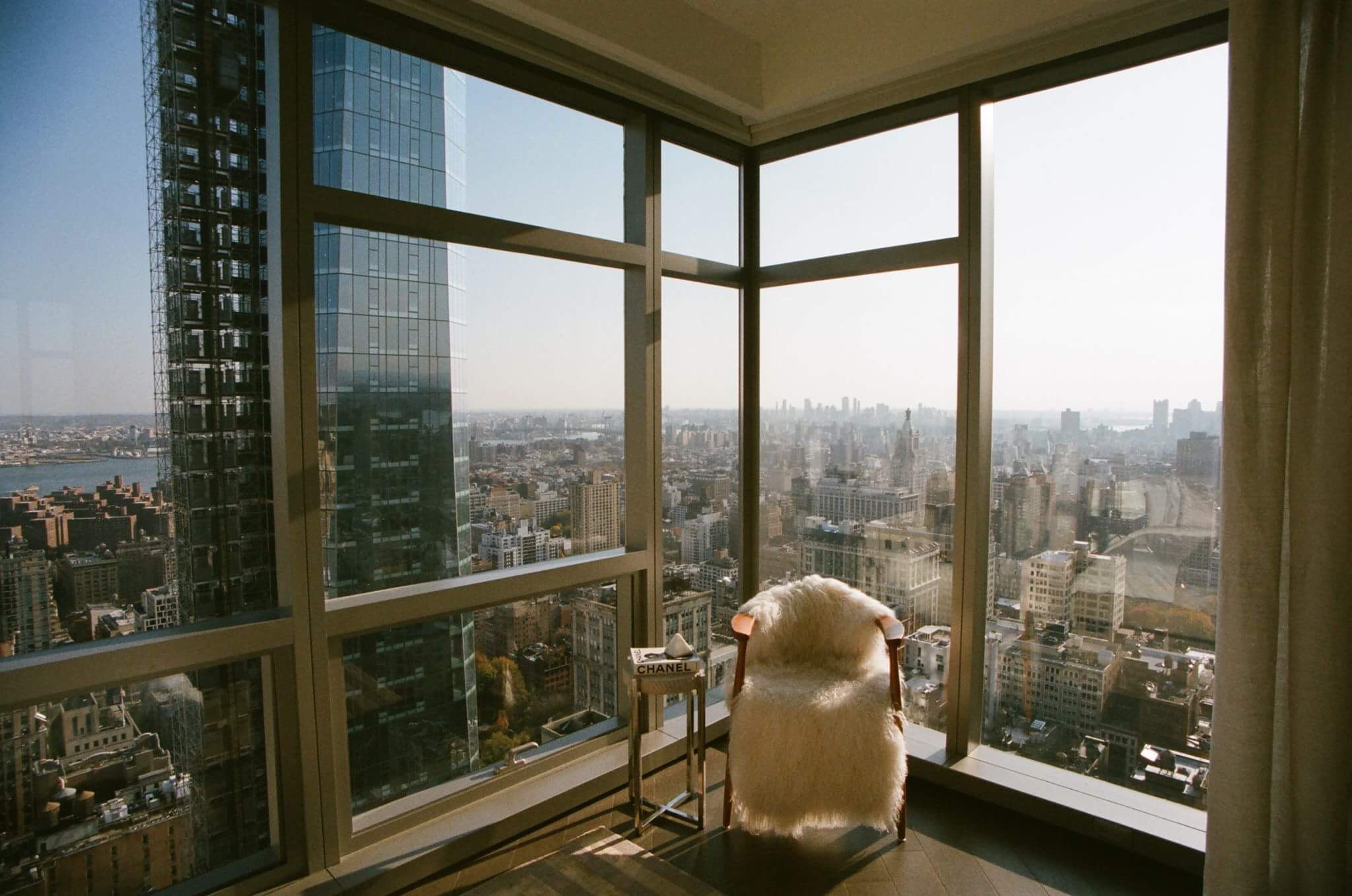
Supported by:


January – April 2017.
Location: Trafoclub
Free entrance
curator: Borbála Szalai
You can download the flyer of the series form here.
For the video-dokumentations of the lecture-performances please visit our YouTube channel.
13/01/2017 6 pm - 8 pm
Serafín Álvarez, Karin Ferrari, György Szimán
György Szimán will talk in Hungarian, Karin Ferrari and Serafín Álvarez will talk in English during their lecture-performance.
Serafín Álvarez: Dead Ends Unfolded
Maze Walkthrough is an unorthodox video game created by Serafín Álvarez in 2014, an interactive virtual architecture made by assembling 3D reproductions of science fiction corridors, sound effects and music together, which give shape to a manifold, complex space to be wandered through. In this new work, a lecture-performance specifically conceived for Trafó Gallery, Álvarez will play Maze Walkthrough live while revealing some of its core elements, external references, inner depths and expanded fields.
Serafín Álvarez (1985) is living in Barcelona, his work focuses on popular media depictions of subjective experiences mediated by technological and scientific developments, especially changes in the perception of reality. His most recent projects develop heterogeneous approaches to various aspects of science fiction, especially how concepts associated with otherness and the journey into the unknown are represented in contemporary audiovisual media such as cinema and video games, through work methodologies that reproduce certain creative practices commonly used by fan audiences of the genre. Álvarez holds a BA and a MA from the University of Barcelona, where he is currently doing a research project on transmedia expansions of science fiction as part of his PhD. He has shown his works at art institutions such as CA2M (Móstoles), CAC (Vilnius), Junefirst Gallery (Berlin), MACBA (Barcelona), MUSAC (León) and La Panera (Lleida) amongst others.

Serafín Álvarez: The Belly of the Whale, 2016 (photo: Arantxa Boyero, CA2M)
Karin Ferrari: Predictive programming: Is the Media Leaking the Future?
Recently a Simpsons episode from the year 2000 made headlines because it predicted Donald Trump’s election as US President. Is this a simple coincidence or a case of predictive programming? Predictive programming is a controversial hypothesis about mind control in media: storylines or subtle images in movies and television shows are used to subconsciously familiarise the public with planned major events and substantial social changes. As a matter of fact, preemptive mass manipulation is already hidden in our everyday digital life in the form of algorithmic personalized search results (filter bubbles). Is predictive programming real? Is classified information leaked through sci-fi movies and music videos? Or do we manifest the images implanted into our collective consciousness?
Karin Ferrari (1982) is a Vienna based artist, who explores symbolism in pop culture, the
entertainment industry and social media in her work. Ferrari’s web series ‘DECODING (THE
WHOLE TRUTH)’ reveals hidden messages in music videos and TV clips. She studied painting and cultural studies at the Academy of Fine Arts in Vienna. She has exhibited and lectured in Austria and internationally, amongst others at the V. Moscow International Biennale for Young Art, at Amsterdam Drawing, at the Royal Military Museums in Brussels, at Ars Electronica Festival, Linz, in Vienna at the 21er Haus - Museum for Contemporary Art, Kunsthalle and at the Akademie der bildenden Künste.

György Szimán: Superplay
The videos and streams about gamers playing and commenting video games (‘Let’s play videos’) are watched by millions. These videos done by gamers mostly for documenting their achievements (eg.: speedruns, kill counts) are almost as old as FPS games themselves. In parallel with the progress of the medium and of technology those video games have also appeared, which implement narrative or dramatic techniques known from movies. Based on these games new kinds of videos have also spread, which rather concentrate on the story, on entertainment or on the pleasure of playing, and which created new formats and presentations with a greater and different kind of audience. György Szimán in his lecture-performance - while playing live with several game classics - will talk about the potential of the medium, it’s possible depths, and the choices, challenges and moral dilemmas of a gamer.
György Szimán (1983) studied at the Intermedia Department of the Hungarian University of Fine Arts. Since 2016 he is a member of the Studio of Young Artists’ Association. Amongst his intermediary conceptual works, he’s current main interest is the medium of videogames.

17/02/2017. 6 pm – 8 pm
Pedro Barateiro, Little Warsaw
The lecture-performances will be in English
Pedro Barateiro: The Sad Savages
In his lecture-performance Barateiro creates a parallel between two events happening at the same place; the cutting of palm trees caused by a plague and the financial crisis, especially its effect on Southern EU countries like Portugal, Spain and Greece. The lecture implements references from various fields; form economy and philosophy, through Tumblr and Facebook, until Barateiro’s own artistic work and his book covers for a fictional publishing house. In his lecture he examines the relation between the idea of melancholia and psycho-sociologic alienation, between intention and imitation as social acts, between the effects of colonial thinking and the forces of capitalism, or the relation of the words in the title ‘sad’ and ‘savage’.
Pedro Barateiro’s (1979) background in drawing, painting and writing was expanded by his education with an MA at Malmö Art Academy, Lund University, Sweden; and at the Independent Study Program in Visual Arts at Maumaus – School of Visual Arts, Lisbon. He further developed his practice in residencies at Air Antwerpen (Antwerp), Pavillon – Palais de Tokyo (Paris), ISCP (New York), Sítio das Artes, CAM – Fundação Calouste Gulbenkian (Lisbon), Spike Island (Bristol) and Galeria Zé dos Bois (Lisbon). He had solo exhibitions at REDCAT, Los Angeles; Museu Colecção Berardo, Lisbon; Kettle’s Yard, Cambridge; Parkour, Lisbon; Kunsthalle, Lisbon; Kunsthalle Basel; Museu de Arte Contemporânea de Serralves, Porto. His work has been included in exhibitions such as the 29th Bienal de São Paulo; 16th Syndey Bienalle; 5th Berlin Bienalle; Fondazione Guiliani, Rome; ngbk, Berlin; MHKA, Antwerp; SESC Pompeia, São Paulo; CAM – Fundação Calouste Gulbenkian, Lisbon; ar/ge Kunst, Bolzano; Palais de Tokyo, Paris.

Pedro Barateiro: The Sad Savages, 2014 (photo: courtesy of the artits)
Little Warsaw: Presentation
“An artist pointing at an other artist”.
András Gálik (1970) and Bálint Havas (1971) began their collaboration in the late 1990. Through films, installations and a wide variety of media, the Hungarian artist duo Little Warsaw addresses historical memory and confronts personal encounters with social experience. At the same time, they examine the role of the artist not only as a producer of images, objects or situations but also as an agent of the context he/she is embedded in. Thus, through their manifold investigations, the artwork itself is also presented as a subject of political, sociological and ideological changes. In recent years, the personal perspective came more and more into the foreground in their latest works, where their very own micro histories, family legends intermingle with greater political events and social changes. In this manner, the radical gestures of interventions of their previous works are often complemented with a more poetic way of expression. The Little Warsaw’s work has been widely exhibited internationally since 2003. They had solo exhibitions e.g. at Museum Abteiberg, Mönchengladbach; AKZM Austellungshalle zeitgenössische Kunst, Münster; Galerie für zeitgenössische Kunst, Leipzig; Kunstnernes Hus, Oslo and Secession, Vienna. Their projects have been included in the 2nd Berlin Biennial, the 1st and 3rd Prague Biennial, in Manifesta 7 in Roverto, in the 12th Bienal de Cuenca, as well as in numerous group exhibitions throughout the world; e.g. at Stedelijk Museum, Amsterdam; Singapore History Museum, Apexart New York, Mathaf Doha, Qatar; Modern Art Institute, Valencia and Institut du Monde Arabe, Paris.

Little Warsaw and Miklós Erhardt: Ship of Fools, 2008. Production still (photo: Peter Puklus©Little Warsaw Archive)
16/03/2017. 6 pm – 8 pm
Miklós Erhardt, The Bureau of Melodramatic Research
The lecture-performances will be in English
Miklós Erhardt :Instrumental
The performance-lecture is a reiteration of a liebling theme in the artist's work, involving melancholy, Bob Dylan and post-truth.
Miklós Erhardt (1966), media-artist, doing videos, ephemeral installations and context based works. Between 1998 and 2006 he worked in the Big Hope artist group on participatory projects. His work was included in exhibitions in Apex Art New York, Galerija Skc Belgrade, Galerie für Zeitgenössische Kunst Leipzig, Wiener Secession and Manifesta 7. He is an associate professor of the Moholy-Nagy University of Art and Design Budapest, he lives and works in Vienna and Budapest.

Miklós Erhardt : Instrumental Dove, 2016
The Bureau of Melodramatic Research: Lessons on Anything
Using the table as a stage to set up controversies on contemporary philosophical ideas and argue about the latest pop songs, the Bureau of Melodramatic Research will make a dialogue-performance where the phone is a speaker, smalltalk a script, and sometimes not. Where your side of the table is a representation and my side the real world and vice versa, the napkin a world and the teaspoon a thought. Like Flaubert’s characters Bouvard and Pécuchet, the Bureau is an expert in anything, from melodrama to philosophy - and in the end they are just complex copies, redundant to one another. The same half, repeated.
Audience is free to join, eavesdrop, check their feeds, drop out of the bar. On this stage, they can choose to be free as in a museum, engaged as in the theater.
“I ain't gonna do your laundry, I ain't your mama”.
The Bureau of Melodramatic Research is a dependent institution founded by Irina Gheorghe and Alina Popa to investigate the affective modulations of contemporary politics and the emotional performance of labour in the new economy. The Bureau’s explorations gradually extended to the intricate workings of alien, anonymous passions which connect us to an unhuman world at the core of ourselves. Their work was shown in Times Museum Guangzhou, WING Hong Kong, CCK Buenos Aires,MNAC Bucharest, bak Utrecht, mumok Vienna, Salonul de proiecte Bucharest, DEPO Istanbul, Ujazdowsky Castle Warsaw, messagesalon Zurich, Center for Visual Introspection Bucharest, etc.

17/03/2017. 6 pm – 8 pm
Pakui Hardware, Ralo Mayer
The lecture-performances will be in English
Pakui Hardware: For Subjects with Perfect Knees
Pakui Hardware will take a walk around the loop of the paradox in which our biological bodies are entangled today: on the one hand, the body is under a constant pressure to enhance oneself, on the other – it is doomed to be left behind as an obsolete vehicle in relation to possible technological developments. Can we make a third hand here? The trajectory of this walk will include algorithmic ecology of High-Frequency Trading, ideas of Prometheanism, the promises of synthetic biology and the perils of perfect knees.
Pakui Hardware (Neringa Cerniauskaite and Ugnius Gelguda) began in 2014. The duo's work spans around the relationship between materiality, technology and economy. How technology is shaping current economy and the physical reality itself, including the human body. In relation to the velocity of technological development, the matter becomes both an obstacle and a vehicle. Their latest solo shows include venues of MUMOK, Vienna; ExoExo, Paris; kim? Contemporary Art Center, Riga; Jenifer Nails, Frankfurt; Contemporary Art Centre (CAC), Vilnius; 321 Gallery, Brooklyn, New York; NADA New York. The artists have participated in group shows at Moscow Biennale for Young Art, Moscow Modern Art Museum (MMOMA) and Zacheta Project Room, Warsaw. The artists are IASPIS grant holders in Sweden.

Pakui Hardware: On the Ecology of Algorithms, 2014
Ralo Mayer: E.T.E. – Extra-Terrestrial Ecologies
On September 26, 1991, eight crewmembers began a two years mission inside the closed ecosystem Biosphere 2 near Oracle, Arizona. Their goals: exploring global ecological relationships and testing future life in space.
Unreliable synopsis of related events: E.T., in drag as post-Soviet consultant and blaring Nirvana’s just-released Nevermind, arrives in the Sonoran Desert to help out the Biospherians with a staged reading of Kim Stanley Robinson’s Mars trilogy. Liberal Martian organic-potato farmer Matt Damon talks to Trump’s chief strategist about his Biosphere 2 takeover. (Steve Jobs like ¯\_(ツ)_/¯, Joan Baez ♫). William Burroughs and Bucky Fuller hack redwood and Allen Ginsberg’s “Howl,” and psychedelic microdosing becomes Silicon Valley’s hot new business trip. In girum imus nocte et consumimur igni, aka De revolutionibus orbium coelestium—now solar-powered!
Ralo Mayer (1976) is an artist based in Vienna. His artistic investigations delineate ecologies of contemporary history linking the past, future and today’s science fiction. Based on a practice of extensive performative research, he creates multilayered storytelling settings in installations, videos, performances and texts. He has presented his work at international exhibitions, film festivals, and conferences, amongst others in Secession, Vienna, 21er Haus, Vienna; Kunsthalle, Vienna; University Museum and Art Gallery, Hong Kong; rotor, Graz; Kunstpavillon, Innsbruck; Lentos Kunstmuseum, Linz; NGBK, Berlin; Transmission Gallery, Glasgow; Artspeak, Vancouver; SKC, Belgrad Kunsthaus Baselland, Basel; ARGOS, Brussels.

Ralo Mayer: Extra-Terrestrial Ecologists, 2016. Digital collage
21/04/2017. 6 pm – 8.30 pm
Rana Hamadeh, Andi Schmied
The lecture-performances will be in English
Rana Hamadeh: And Before It Falls It Is Only Reasonable To Enjoy Life A Little
This performance, developed under the umbrella of the Alien Encounters Project that Rana Hamadeh initiated in 2011, is an exhaustive deliberation on the notion and gesture of ‘falling’: falling as a form of legal apathy; falling as a choreographic gesture; and falling as a dynamic of virulence. In this performance, the artist leads a journey amidst the legal coding of the terms ‘falling ill’, ’immunity’ and ‘quarantine’, to outer-space and land-sea relations plotted through science fiction projections, geo-political territory formation and cross-border travel. Thinking through the conjunction of the legal and the spatial, Hamadeh plays out an intensive scrutiny of the shared lexicons of criminology, epidemiology and theater.
Rana Hamadeh (1983) is a visual and performance artist from Lebanon based in The Netherlands. Drawing on a curatorial approach within her artistic practice, she develops longstanding discursive projects that think through the infrastructures of justice, militarism, histories of sanitation and theatre. Her work stems from an extended investigation into specific concepts and terms, treating the field of theory as fiction. Hamadeh's previous solo exhibitions include a.o. The Institute of Modern Art, Brisbane; The Showroom, London; Leopold Hosch Museum; Nottingham Contemporary; Western Front, Vancouver; Gallery TPW, Tonoto and Kiosk, Ghent. Group exhibitions include a.o. The Moscow Biennial, The New Museum, New York; e-flux, New York, The 8th Liverpool Biennial, Wattis Institute, The Lisson Gallery, Beirut, Witte de With and the Van Abbemuseum.

Rana Hamadeh: And Before it Falls It Is Only Reasonable to Enjoy Life a Little, 2014 (fotó: Yves Kerckhoffs)
Andi Schmied: Siberian Marble
Andi Schmied, while pretending to be a Hungarian billionaire hunting for a luxury apartment, got excess to over 30 of the most exclusive condos of Manhattan. In her lecture-performance she will guide us around these penthouses, show the sunset from Trump World Tower, the views from the tallest apartment building on the planet, and samples of the most luxurious materials used in bathtubs overlooking the Statue of Liberty.
Andi Schmied (1986) is an artist based in Budapest. With her installations and photographs she meticulously explores architectural anomalies; places that for one reason or another do not follow conventional urban logic - yet they are part of our cityscapes. These vary from urban areas that went far from their original function to unfulfilled dead ends of urban planning or utopian architectures. She had studied at The Bartlett School of Architecture, University College London, and at the Universitat Pompeu Fabra, Barcelona. In 2015 she has granted Pécsi József Photography Grant. She has participated at various residency-programs, for example at Triangle Arts Association, New York, USA at Residency at S-AIR, Curators Network, Sapporo, Japan and at dortdYart, Dordrecht, NL.

Supported by:


























